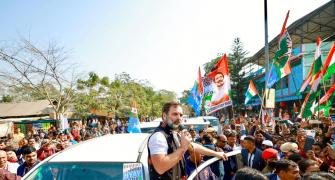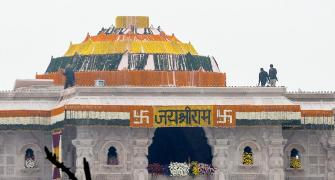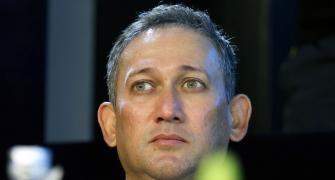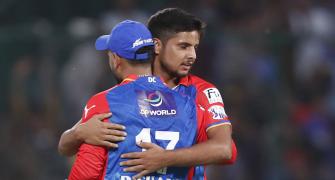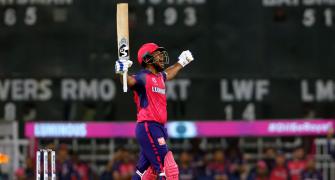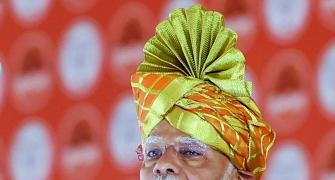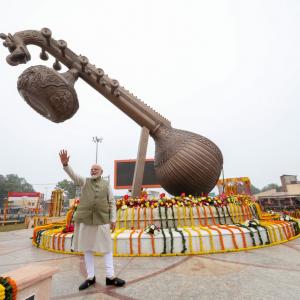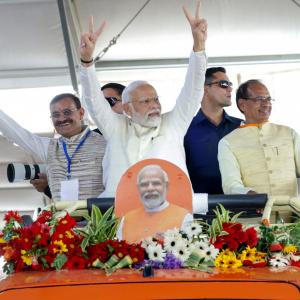The most important lesson is that you have to build your political proposition, and sell it yourself.
You can't leave it to the courts, media, NGOs and civil society and expect them to play the role of the Opposition.
That's precisely what Mr Modi's challengers have been doing and we know the results, observes Shekhar Gupta.

Let's explore the list of usual suspects the Opposition, especially the Congress, will be blaming after the fiasco of its Supreme Court outing over the Adani issue.
It will keep failing until it answers the most important question: Why are none of its campaigns against the Narendra Modi government capturing the political imagination?
To begin with, it will be Mr Modi and what the Opposition would call his 'institutional capture' of the judiciary.
The second will be the judiciary itself. The only time, it would be said, they stood up to the Modi government was when their own interest was at stake: As in striking down the NJAC Act.
The third will be the news media. If only they had built Adani into the kind of scam they conjured up with 2G, etc in 2011-2014 and with Bofors in 1987-1989.
Which brings us to the nub of the issue. Why are the people not impressed by any of the various chargesheets, from demonetisation to Rafale, and alleged cronyism with Adani now?
In the past, this columnist had written that Narendra Modi is a sui generis leader in that instead of being diminished by incumbency, he continues to grow stronger as he spends more time in power.
The description used was that he is more than Teflon-coated. Because Teflon also wears out with time. He is like a leader cast in titanium.
Please note, however, that that column was written in the summer of 2018.
A full six years would have passed when the next general election is concluded in May this year. Does it look like that titanium has frayed even a little bit?
Has he done nothing wrong meanwhile? Anybody would make errors, suffer policy setbacks and, in the Indian environment, have serious allegations of scams to answer for.
The Opposition has identified many: Demonetisation, a flawed GST, the farm laws, as well as disasters during the second Covid wave.
It tried to build a mega scam environment around Rafale and Adani. But it never worked.
That is the first and foremost thing you need to do if you want to bring about political change in India.
There are enough examples of how the smarter Opposition leaders in our politics have been able to bring about dramatic political change simply by conjuring up an idea to cut into mass emotion and transform it.
That idea doesn't even have to be a complete reality.
Bofors wasn't a gun that fired backwards and no bribe money has been found in 37 years.
Telecom's 2G definitely wasn't a Rs 1.76 trillion scam, nor was coal worth Rs 1.86 trillion, or the Commonwealth Games worth Rs 70,000 crore.
Trillions of stolen dollars were not locked up in Swiss banks.
The important thing is, in each case, the challenger of the day was able not just to pick an issue with emotional potential, but also to conjure up a campaign pitch, a line, to convince a large enough body of voters that it mattered to them.
And mattered to them enough to think of changing their government. This began with 1967, our first contested general election.
We will jumble up the chronology a fair bit as we go along, and begin instead with 1987-89, the Bofors era.
As scandals go, Bofors wasn't a big one (Rs 64 crore) even for 1987.
Yet V P Singh was able to build an entire campaign around it.
Enough people believed Rajiv Gandhi was involved, leading to his defeat.
Singh's reward was prime ministership, however short-lived.
Singh swept the Hindi heartland for his party and its allies almost as comprehensively as Mr Modi has done.
In his campaign years, there was no news TV and no social media. How did he take his message to the masses and what was the message?
I was among the many reporters who followed him as he rode a motorcycle through the poorest villages of rural Allahabad during his 1988 summer by-election).
His party workers would collect people, often no more than a few scores, under a tree.
'I have come to tell you that your home has been burgled,' he would begin, and then pull out a matchbox from his pocket to explain how.
However poor you may be, you all buy diya salai (a matchbox). Out of what you pay for it, a few paisas go to the government as tax. This is your money.
With this, the government buys guns for your army. If they have stolen some of this, isn't it like your home being burgled?
In my book, this, with Rajiv Gandhi's Congress reduced from 414 to 197, was the most dramatic and unlikely turnaround in Indian politics.

Since we are messing up the chronologies, we can go back and forth.
What did Indira Gandhi pitch in 1971 to beat off a combined challenge from the entire Opposition and the 'original' core of the Congress she had split?
They say remove Indira, she said, Indira says remove poverty. Now you make your choice.
Once again, nobody would've believed it was so easy to rid India of poverty.
But her numbers in 1971, 352 out of 518, took her almost where Jawaharlal Nehru had finished in his last election, early 1962.
She was defeated because of the Emergency, and how did she plan her comeback?
The Janata Party government had crumbled and she now invented the epithet of khichdi to describe it.
Do you want the same khichdi again, or return to my strong government?
She was back in power again, with about the same numbers: 353 out of 529.

Even in 2004, when the incumbent Vajpayee government suffered a dramatic defeat nobody could predict, the Congress had come up with an idea as strong in political imagination as it was in emotional connection.
The BJP's campaign was 'India Shining'. The Congress said, India may be shining, but what did you get?
'Aap ko kya mila?' It worked, again in my book, it was the second most dramatic reversal of political fortunes in India after V P Singh's in 1989.
Now I will take you back to 1967, our first truly contested election. This is when the Congress dropped below the 300-mark for the first time.
India was dealing with multiple crises, Indira Gandhi's hold on the party was tenuous, but the opposition had no rival or alternative to offer.
The slogan I remember from then: 'Indira tere shashan mein, kooda bik gaya ration mein (in your reign Indira, even garbage is sold under rationing).'
Or you could use another interpretation -- that what was being sold against ration cards was of poor quality or adulterated.
Any which way, a mood was built where she ended up with a majority of just 21 (283 in a House of 523).
More importantly, in several key states, her party was defeated and amorphous coalitions took power.

And finally, the fifth, the rise of Mr Modi in 2014. While the BJP and RSS machine had already built an almighty anti-corruption movement and built the image of Manmohan Singh as a weak prime minister, Mr Modi came with a proposition of his own: 'Acche Din (better days).'
All of this combined to reduce the Congress from 206 in 2009 to a mere 44.
The upshot is that challengers have risen from utter hopelessness to defeat powerful incumbents.
But they need big ideas, credibility, and a line that tugs at the hearts of a critical mass of voters.
Once you have it, you need at least a couple of years' hard work on the ground.
The most important lesson is that you have to build your political proposition, and sell it yourself.
You can't leave it to the courts, media, NGOs and civil society (anti-CAA protest is an example) and expect them to play the role of the Opposition.
That's precisely what Mr Modi's challengers have been doing and we know the results.
By special arrangement with The Print
Feature Presentation: Aslam Hunani/Rediff.com


